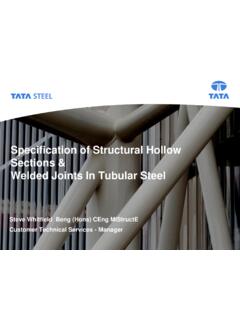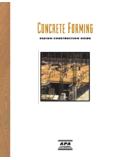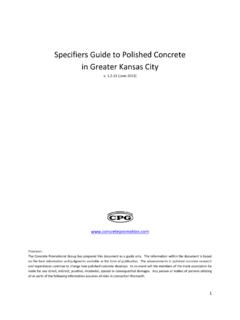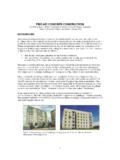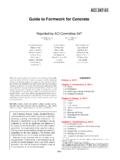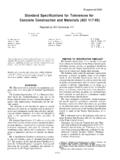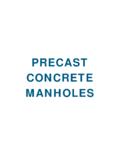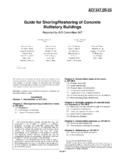Transcription of Guide on Design of post-installed anchor bolt …
1 Page 1 of 87 Guide on Design of post-installed anchor bolt systems in Hong Kong Dr. Cho and Ir Prof. SL Chan Department of Civil and Environmental Engineering, The Hong Kong Polytechnic University published by The Hong Kong Institute of Steel Construction Page 2 of 87 Contents 1 Introduction .. 6 Scope of this book .. 6 Aim of anchor bolt Design .. 7 Limit state Design .. 7 Resistance and load factors .. 8 Resistance factors .. 8 Load factors .. 9 Major symbols .. 9 2 anchor Bolts and Base Materials .. 11 anchor bolts .. 11 Types of anchor bolts .. 11 anchor bolts in a group .. 13 Base Materials .. 15 Concrete .. 15 Other base materials.
2 16 Grout .. 17 3 Static analysis of anchor bolts .. 18 General .. 18 Tension force per anchor bolt .. 18 Fastenings subject to tension only .. 19 Fastenings subject to uni-axial bending moment only .. 19 Fastenings subject to tension and significant uniaxial bending moment 21 Shear force per anchor bolt .. 21 Shear force without lever arm .. 25 Shear force with lever 25 4 Failure modes and Design resistance of mechanical anchors .. 29 General .. 29 Resistance to tension force .. 30 Page 3 of 87 Steel failure .. 30 Pull-out failure .. 31 Concrete cone failure .. 31 Splitting failure .. 37 Resistance to shear force .. 38 Steel failure.
3 38 Concrete edge failure .. 40 Concrete pry-out failure .. 45 Resistance to combined tension and shear forces .. 46 Design procedure of mechanical anchor bolts .. 46 5 Failure modes and Design resistance of chemical anchors .. 48 General .. 48 Resistance to tension force .. 49 Steel failure .. 49 Combined pull-out and concrete cone failure .. 49 Concrete cone failure .. 51 Splitting failure .. 52 Resistance to shear force .. 52 Steel failure .. 52 Concrete edge failure .. 52 Concrete pry-out failure .. 52 Resistance to combined tension and shear forces .. 52 Design procedure of chemical anchor bolts .. 52 6 Seismic Design Consideration.
4 54 General .. 54 Seismic performance categories .. 54 Design options .. 55 Design Option a1) capacity Design .. 55 Design Option a2) elastic Design .. 56 Design Option b) .. 56 Page 4 of 87 Design 57 7 anchor Bolt Qualification .. 61 General .. 61 anchor bolt assessment .. 61 Tests for suitability .. 61 Tests for admissible service conditions .. 63 Assessing the resistances of an anchor bolt .. 65 8 Design Examples .. 67 2 2 anchor bolt group with tension and shear .. 67 Double anchor bolt group with shear and torsion .. 72 2 2 anchor bolt group with shear and uniaxial moment .. 76 9 References .. 82 Appendix A Installation Procedure.
5 83 Installation procedure of mechanical anchor bolts .. 83 Installation procedure of torque-controlled expansion anchor .. 83 Installation procedure of displacement-controlled expansion anchor .. 83 Installation procedure of undercut anchor .. 83 Installation procedure of chemical anchor bolts .. 84 Installation procedure of bonded anchor .. 84 Installation procedure of bonded expansion anchor .. 84 Appendix B Testing of anchor Bolts of Admissible Service Conditions .. 85 Page 5 of 87 Preface This book is published by The Hong Kong Institute of Steel Construction for the benefit of the construction industry via technology advancement. The authors acknowledge the supports by the Research Grant Council of the Hong Kong SAR Government on the projects Second-Order Analysis of Flexible Steel Cable Nets Supporting Debris (PolyU 152008/15E) and Second-order and Advanced Analysis of Arches and Curved Structures (PolyU 152012/14E) and the Innovative Technology Fund for the project Advanced Design of flexible barrier systems by large deflection theory (ITS/032/14).
6 Disclaimer No responsibility is assumed for any injury and/or damage to persons or properties as a matter of liability, negligence or otherwise, or from any use or operation of any methods, products, instructions or ideas contained in the material herein. Page 6 of 87 1 Introduction Scope of this book anchor bolts have been extensively used over the world for connecting steel structures to concrete structures. They can be either cast-in or post-installed . However, in many cases, such as in Alteration and Addition (A&A) works in Hong Kong, the concrete has already been cast and set and therefore the anchor bolts are normally post-installed .
7 In European countries, the European Organisation of Technical Assessment (EOTA) published the Guideline for European Technical Approval of Metal Anchors for Use in Concrete (ETAG 001) [1]. anchor bolts which acquire European Technical Assessments or formerly known as European Technical Approvals (ETAs) must fulfill the requirements given in ETAG 001 [1]. On the other hand, the European Committee for Standardization (CEN) published Design of Fastenings for Use in Concrete (CEN/TS 1992-4) [2] which provides technical specifications on anchor bolt Design which is based on the limit state approach. In Hong Kong, the authority provides a list of approved anchor bolts in the Central Data Bank (CDB) [3] which have been tested in accordance with outdated BS 5080 [4] and ETAG 001 [1].
8 However, the current construction regulations do not provide specific Design codes of anchor bolts so advanced system can hardly be demonstrated to be sufficient. Instead of the limit state Design approach, authorities widely accept using a global factor of safety of to the characteristic resistance of the anchor bolt to obtain its Design resistance. This method has been adopted for decades and is considered obsolete and lack of transparency because the true failure mode of the anchor bolt or the bolt group cannot be reflected. Therefore, a Design Guide making references to latest technologies appears to be necessary. This handbook is aimed to set out the Design guidelines for post-installed anchor bolt Design subject to mainly static loads making references to ETAG 001, Annex C [1], TR029 [5] and CEN/TS 1992-4 [2].
9 The Design guidelines can be applied to both single anchor bolts and bolt groups. This handbook shall be used in conjunction with the Code of Practice for the Structural Use of Steel [6] and the Code of Practice for Structural Use of Concrete Page 7 of 87 [7] or other relevant Design codes for Design of other steel elements such as base plate or checking of existing structural elements which is not covered in this handbook. Aim of anchor bolt Design The aim of anchor bolt Design is to produce an anchor bolt connection analysis and Design of adequate safety and serviceable level in its Design life, both at a sufficiently and acceptably low probability of violating the limit states.
10 The anchor bolt connection should be fit for its purpose of construction during the Design life of a structure. Limit state Design The limit state Design (LSD) was first introduced and became widely used around early 80 s and it is aimed to make sure the factored resistance greater than factored Design load as: ( ) in which and are respectively the load and resistance factors. The load effects, , shall be determined by normal structural analysis methods for axial, bending, shear or torsion and/or other actions in structural members and components, multiplied by a partial load factor ( ) to give an upper bound estimate for load effects.



